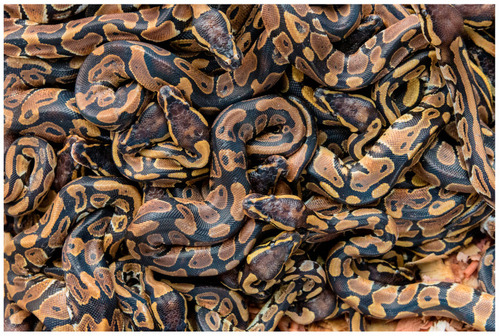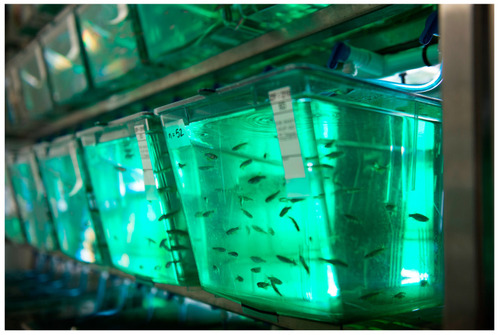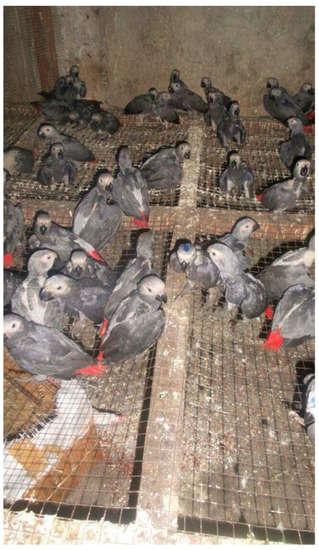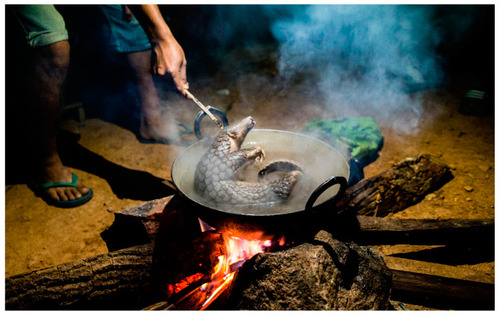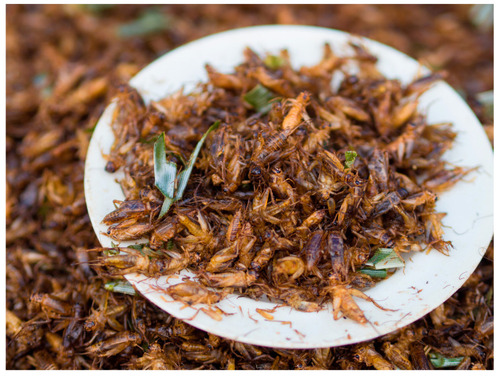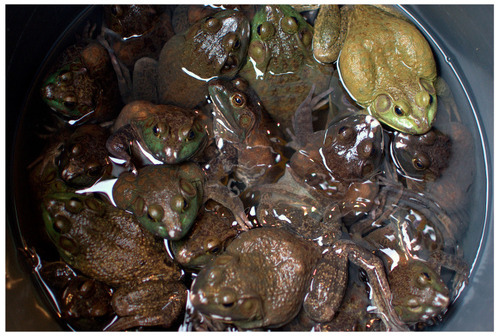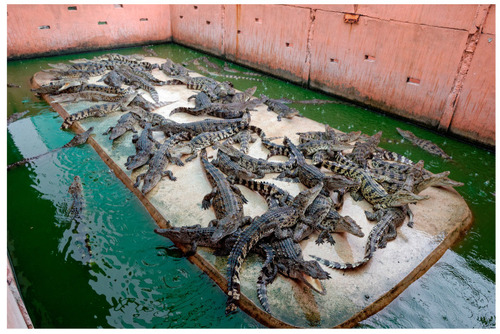- Title
-
Chains of Commerce: A Comprehensive Review of Animal Welfare Impacts in the International Wildlife Trade
- Authors
- Lambert, H., Elwin, A., Assou, D., Auliya, M., Harrington, L.A., Hughes, A.C., Mookerjee, A., Moorhouse, T., Petrossian, G.A., Sun, E., Warwick, C., Can, Ö.E., D'Cruze, N.
- Source
- Full text @ Animals (Basel)
|
A mixture of wild-caught, ranched, and captive-bred ball pythons intended for the international commercial pet trade. Credit: Neil D’Cruze/World Animal Protection. |
|
Captive-bred zebrafish intended for the international commercial pet trade. Credit: “NIH Zebrafish Facility” by National Institutes of Health (NIH), licenced under CC BY-NC-2.0. |
|
African grey parrots during international transport for the pet trade. Credit: Anonymous. |
|
White cheek shark slaughtered for the shark fin trade by USFWS Headquarters, Public Domain Mark 1.0. |
|
A wild-caught pangolin destined for the traditional medicine trade. Credit: Neil D’Cruze/World Animal Protection. |
|
Commercially farmed crickets intended for human food products and livestock feed. Credit: “IMG_6583_01” by killerturnip, licenced under CC BY-NC ND 2.0. |
|
Wild-caught frogs intended for human consumption as food. Credit: “Frogs for sale” by caperry123, licenced under CC BY-ND 2.0. |
|
Captive-bred crocodiles farmed for their skins and meat. Image from 2016, Credit: Jan Schmidt-Burbach/World Animal Protection. |
|
Captive-bred lion and tiger cub offered to tourists for petting and interactions. Credit: Pippa Hankinson/Blood Lions. |
|
Captive bred elephant calf undergoing aversive conditioning to prepare them for tourism-related experiences such as elephant riding and circuslike performances. Credit: World Animal Protection. |

